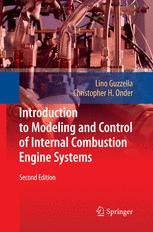

Most ebook files are in PDF format, so you can easily read them using various software such as Foxit Reader or directly on the Google Chrome browser.
Some ebook files are released by publishers in other formats such as .awz, .mobi, .epub, .fb2, etc. You may need to install specific software to read these formats on mobile/PC, such as Calibre.
Please read the tutorial at this link: https://ebookbell.com/faq
We offer FREE conversion to the popular formats you request; however, this may take some time. Therefore, right after payment, please email us, and we will try to provide the service as quickly as possible.
For some exceptional file formats or broken links (if any), please refrain from opening any disputes. Instead, email us first, and we will try to assist within a maximum of 6 hours.
EbookBell Team

0.0
0 reviewsInternal combustion engines (ICE) still have potential for substantial improvements, particularly with regard to fuel efficiency and environmental compatibility. In order to fully exploit the remaining margins, increasingly sophisticated control systems have to be applied. This book offers an introduction to cost-effective model-based control-system design for ICE. The primary emphasis is put on the ICE and its auxiliary devices. Mathematical models for these processes are developed and solutions for selected feedforward and feedback control-problems are presented.
The discussions concerning pollutant emissions and fuel economy of ICE in automotive applications constantly intensified since the first edition of this book was published. Concerns about the air quality, the limited resources of fossil fuels and the detrimental effects of greenhouse gases exceedingly spurred the interest of both the industry and academia in further improvements.
The most important changes and additions included in this second edition are:
• restructured and slightly extended section on superchargers;
• short subsection on rotational oscillations and their treatment on engine test-benches;
• complete section on modeling, detection, and control of engine knock;
• improved physical and chemical model for the three-way catalytic converter;
• new methodology for the design of an air-to-fuel ratio controller;
• short introduction to thermodynamic engine-cycle calculation and corresponding control-oriented aspects